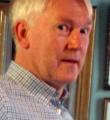
The early watercolours and ink drawings of Samuel Palmer evoke a rural idyll, a vision of a secure village life seemingly far removed from the harsh realities of modern industrial Britain. But while his mentor, William Blake, seemed to live in a world of pure fantasy, Palmer struggled to maintain a balance between his actual experience and the ideals which fuelled his art. In their different ways, both Constable and the Pre-Raphaelites tried to resist the pressures of materialism in favour of higher truths. Only towards the end of his life did Palmer find a way to paint not only what he saw, but also what he felt; his series of watercolours inspired by Milton are among the most dazzling and sumptuous of the entire Victorian period.

Timothy Wilcox held curatorial posts at the British Museum and the Victoria and Albert Museum and was for 10 years an Associate Lecturer at the University of Surrey. A leading authority on British watercolour painting, he is an established NADFAS lecturer and is the author of 'Samuel Palmer' in the Tate series: British Artists.

